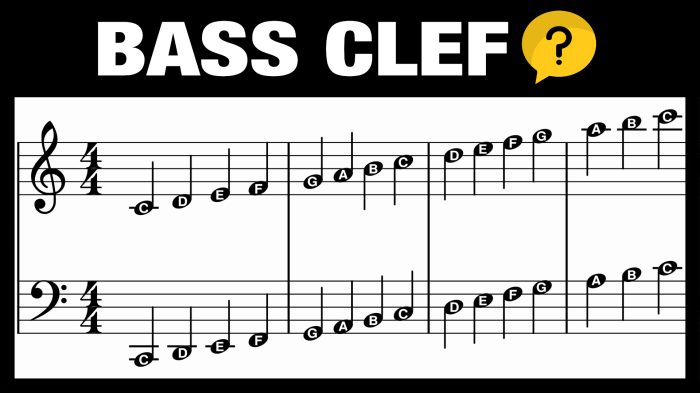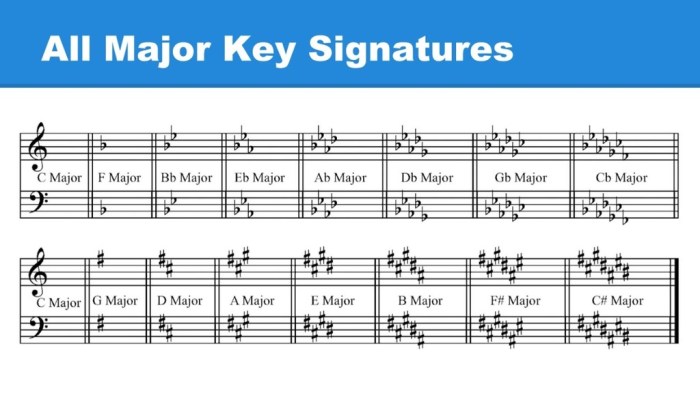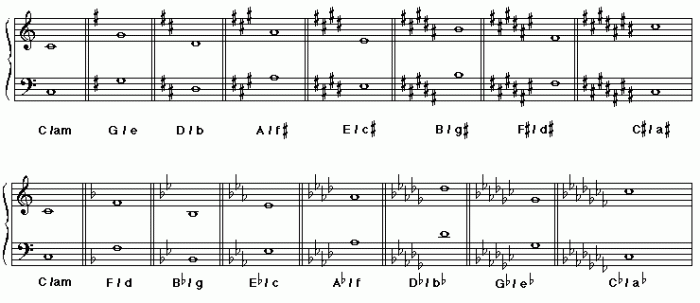Welcome to the realm of musical harmony, where the E minor triad bass clef stands as a cornerstone. This guide will embark on an engaging journey, unraveling the intricacies of this essential chord, its fingerings, inversions, and profound musical significance.
Prepare to delve into the world of E minor triads, where melodies bloom and chords resonate with emotional depth.
Definition and Structure of E Minor Triad

In music theory, a triad is a chord consisting of three notes played simultaneously. The E minor triad is a specific type of triad that consists of the notes E, G, and B.
In the bass clef, the E minor triad is arranged as follows:
- E (root) is played on the first ledger line below the staff.
- G (third) is played on the third line of the staff.
- B (fifth) is played on the fifth line of the staff.
Fingerings and Inversions: E Minor Triad Bass Clef

Playing an E minor triad in the bass clef involves specific fingerings and an understanding of inversions. Let’s explore these concepts.
Fingerings, E minor triad bass clef
Common fingerings for the E minor triad in the bass clef are:
- Left hand: 1-2-4 (E, G, B)
- Right hand: 1-2-4 (E, G, B)
Inversions
Inversions refer to rearranging the notes of a triad to create different voicings. The E minor triad has three inversions:
- Root position: E (root), G (3rd), B (5th)
- First inversion: G (root), B (3rd), E (5th)
- Second inversion: B (root), E (3rd), G (5th)
Inversions can add variety and interest to music by changing the harmonic emphasis and creating different melodic lines.
Chord Progressions and Harmonization

The E minor triad serves as a crucial component in numerous common chord progressions. Its versatility allows it to create both consonant and dissonant harmonies, contributing to the emotional impact and musical flow of compositions.
Role in Chord Progressions
In the key of E minor, the E minor triad forms the root chord (I). It often progresses to the A minor triad (vi), creating a sense of stability and resolution. This I-vi progression is commonly used in folk, pop, and rock music.
Additionally, the E minor triad can progress to the G major triad (V), establishing a dominant-tonic relationship that provides a strong sense of resolution. This I-V-vi progression is frequently found in classical and jazz music.
Harmonizing Melodies
The E minor triad can effectively harmonize melodies by providing a supportive harmonic framework. When a melody note falls within the E minor triad, the triad can be used to create a consonant accompaniment. This harmonization technique enhances the melodic line and adds depth to the musical texture.
The e minor triad bass clef is a fundamental chord in music theory. Its simplicity makes it a great starting point for beginners. If you’re interested in learning more about legal matters, you can read the case of aceves v.
u.s. bank n.a . Coming back to music, the e minor triad bass clef is a versatile chord that can be used in a variety of genres.
Musical Examples
- “Yesterday” by The Beatles:The E minor triad plays a prominent role in the harmonic structure of this iconic song, contributing to its melancholic and introspective mood.
- “Clair de Lune” by Claude Debussy:The E minor triad appears frequently in this piano piece, creating a sense of ethereal beauty and tranquility.
- “Prelude in E Minor” by Frédéric Chopin:This prelude showcases the expressive capabilities of the E minor triad, utilizing it to convey a range of emotions from sadness to hope.
Historical and Cultural Significance

The E minor triad has a rich and varied history, with roots in both Western and Eastern musical traditions.
In Western music, the E minor triad first emerged during the Middle Ages, where it was used in both sacred and secular music. It became increasingly common during the Renaissance and Baroque periods, and was frequently used in the works of composers such as J.S.
Bach and George Frideric Handel.
In Classical Music
During the Classical period, the E minor triad continued to be used extensively, particularly in the works of Wolfgang Amadeus Mozart and Ludwig van Beethoven. It was often used to create a sense of melancholy or sadness, and was frequently employed in minor-key works.
In Romantic Music
In the Romantic period, the E minor triad became even more popular, and was used by composers such as Franz Schubert, Robert Schumann, and Johannes Brahms. It was often used to express a wide range of emotions, from love and longing to despair and sorrow.
In 20th-Century Music
In the 20th century, the E minor triad continued to be used in a variety of musical genres, including jazz, blues, and rock. It was frequently used in film and television scores, and was also used in popular music by artists such as The Beatles and The Rolling Stones.
Commonly Asked Questions
What is an E minor triad?
An E minor triad is a three-note chord consisting of the notes E, G, and B, played simultaneously.
How do I play an E minor triad in the bass clef?
In the bass clef, the E minor triad is typically played with the left-hand fingers 1, 2, and 4 on the strings E, A, and D.
What are the inversions of the E minor triad?
The inversions of the E minor triad are the first inversion (G in the bass), second inversion (B in the bass), and third inversion (E in the bass).
